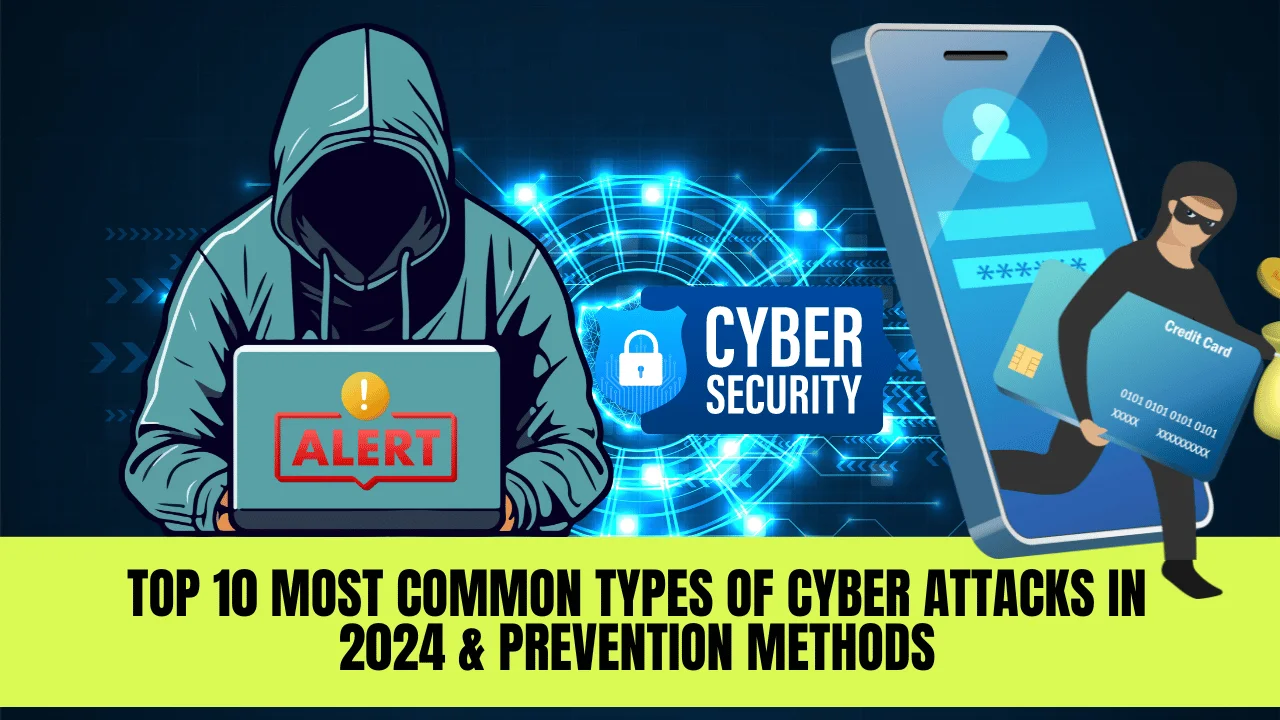Life without the Internet is unimaginable, especially post-Covid. Whether for remote work or staying connected with loved ones, the Internet is essential in every aspect of our lives. In this article, we’ll explore the top 10 most common types of cyber attacks, how they occur, and how to prevent them.
1. Malware:
Malware, short for malicious software, refers to software or code designed to damage or disrupt digital devices. It is a prevalent form of cyberattack due to its ability to target various types of devices easily. Different types of malware include ransomware, file-less malware, spyware, adware, trojans, worms, rootkits, mobile malware, exploits, scareware, keyloggers, botnets, MALSPAM, wiper attacks, and many others. Each type poses unique threats, but all aim to compromise the security and functionality of affected systems.
2. Denial-of-Service (DoS) Attacks:
A Denial-of-Service (DoS) attack is a focused effort to disrupt your server by overwhelming it with a large volume of small requests. This bombardment causes significant delays, hampering your ability to perform essential tasks such as sending emails or accessing websites. While no data is lost during a DoS attack, the constant influx of requests creates substantial time delays, severely impacting productivity. It’s important to note that a DoS attack originates from a single system, making it a concentrated assault on your server’s capabilities.
3. Phishing:
Phishing is a type of cyberattack where someone, through the use of email, SMS, social media or other techniques, tries to get sensitive information out of you such as bank account numbers or important passwords for personal use or to install a virus in your system. You should always be aware and double-check the information of the person from a higher authority before giving out important information. Some types of phishing are whaling, spear phishing, vishing and many more.
4. Spoofing:
Spoofing is a cyber attack where criminals impersonate someone familiar to you in order to gain your trust and access sensitive information. Their objectives can include stealing money, obtaining passwords, or installing harmful viruses on your device. Common types of spoofing include email spoofing, ARP spoofing, and domain spoofing. To avoid being scammed, always verify the identity of the person contacting you through a different communication method.
5. Identity-Based Attacks:
These types of attacks are challenging to detect. They occur when someone hacks your account and impersonates you. Once the account is compromised, distinguishing between the legitimate user and the hacker becomes difficult. The hacker can then contact others from your account to solicit their information or post harmful content. To mitigate this risk, enable two-factor authentication wherever possible and use a strong password. Examples of identity-based attacks include kerberoasting, MITM attacks, Pass-the-Hash attacks, and Golden and Silver ticket attacks.
6. Code Injection Attacks:
A code injection attack occurs when a cybercriminal inserts malicious code into your system, altering its functionality. Various types of code injection attacks include Cross-Site Scripting (XSS), malvertising, data poisoning, and SQL injections. These attacks can compromise your system’s security and data integrity, leading to significant vulnerabilities and potential breaches.
7. Supply Chain Attacks:
A supply chain attack doesn’t target individuals directly. Instead, cybercriminals compromise a third-party service provider associated with the target. The attacker inserts malicious code into the software used by the supply chain, which then impacts all users negatively. While software supply chains are vulnerable to such attacks, hardware supply chains are generally less susceptible.
8. Social Engineering Attacks:
Social engineering attacks exploit psychological manipulation to deceive individuals. Cybercriminals gain access to sensitive information by earning the victim’s trust or instilling fear. These attacks are often carried out to gain leverage or a competitive advantage. Common types include pretexting, business email compromise, disinformation campaigns, honeytraps, quid pro quo schemes, and more.
9. Insider Threats:
Most technical teams of companies only stay wary of external cyber threats to the company. Insider threats are given by those cyber criminals who are already a part of said company or who have managed to gather inside information about the same. The most common example of an insider threat is how people usually end up paying financial compensation to protect their company’s information from being leaked by cybercriminals.
10. AI-powered attacks:
The use of AI has become prevalent across various domains, including cyber attacks. While many companies deploy AI to safeguard their servers from breaches, cyber attackers have also mastered artificial intelligence. They exploit AI to inject malicious code and steal sensitive information from individuals and organizations. Examples of AI-driven attacks include Adversarial AI/ML, Dark AI, DeepFake, and AI-generated Social Engineering.
